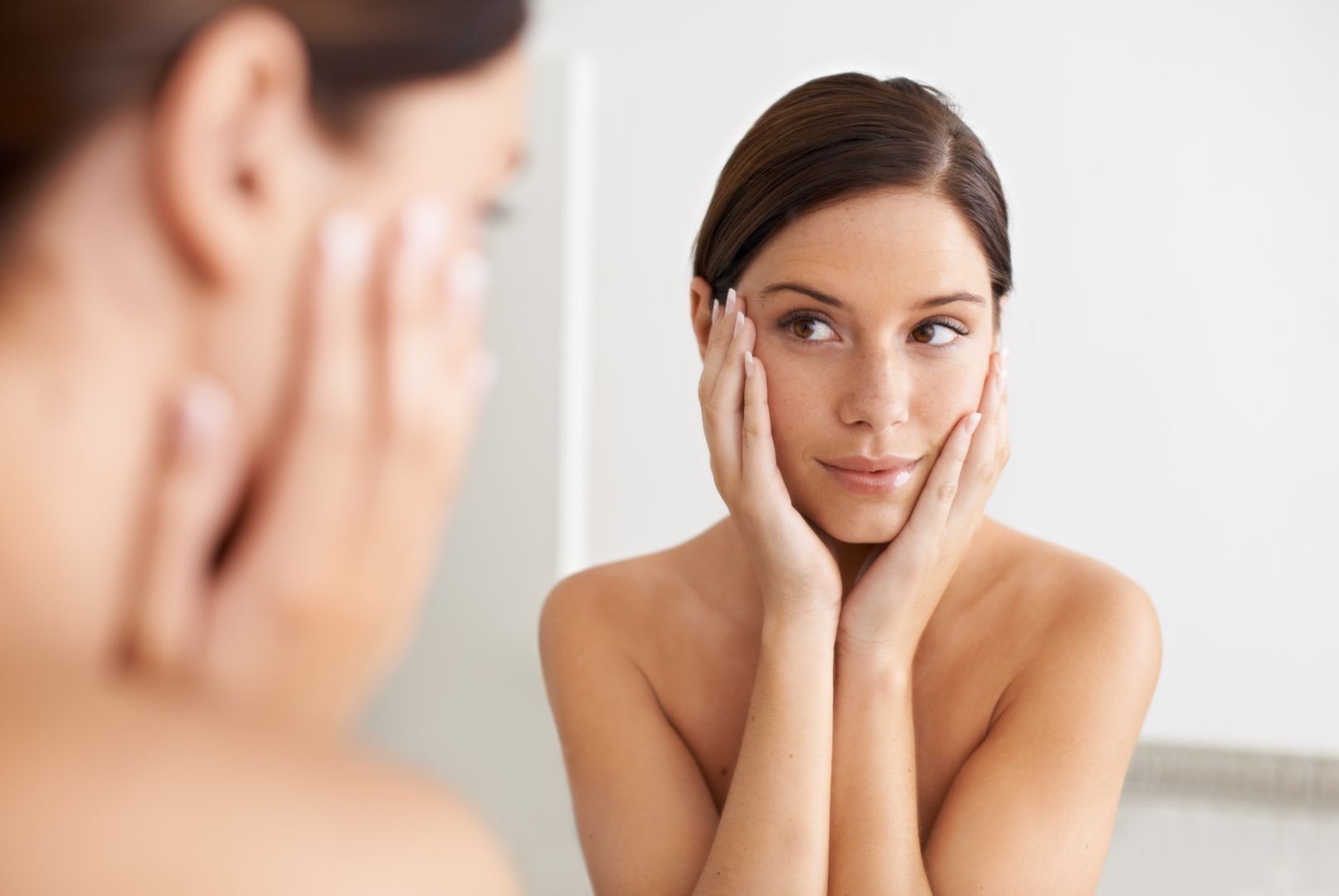

It might surprise you to learn that, according to some experts, combination skin is actually the most common skin type. While many people think they have oily or dry skin, it may actually be a combination of both. As with most skin types, there is more than one factor at play, and when it comes to combination skin, it’s totally normal to be oily in some spots and dry in others.
Let’s talk about what combination skin means, how to tell if you have this skin type, and the best ways to deal with it. Below, we explain the tell-tale signs, as well as essential information on what causes combination skin, and how best to care for those pesky oily areas.
Common Characteristics of Combination Skin
Skin never stays exactly the same as it may easily be affected by seasonal and hormonal changes. While these are factors to take into consideration, there are also some more definitive signs that you may have combination skin. The signs are as follows:
Your t-zone (forehead, down the nose to the chin) is oily, while your cheeks are dry.
Your skin is oilier in summer and dry in winter. In spring and fall, your T-zone is oily while your cheeks are dry.
When you are on your period, your skin might experience breakouts causing you to think your skin is oily. But once your period is over, the breakouts may clear right up and your skin may become flaky.
What Causes Combination Skin?
There are many factors that lead to your skin type. Genetics is one of the main factors and can even determine the amount of oil your skin produces because they regulate cell production. People often have varying sizes of sebaceous glands—which produce sebum (one component of our important hydrolipidic film). Overactive sebaceous glands cause more oil production.
Hormones are another factor to consider, and might cause your skin to over-produce oil in some areas while drying out in others. Schultz says that the root cause of oil secretion is “directly related to male hormone content” and that your body reacts to this hormone, or the perceived imbalance of this hormone, by making too much oil. You can thank your parents and your age for that. Once you hit menopause, however, your skin will produce much less oil and you'll likely be left with dry skin only.
Another big thing is your environmental factors like heat and humidity that your skin is naturally more oily in these kinds of temperatures. Prolonged humid conditions cause sweat glands to produce more sweat, leaving the skin moist and shiny, whereas, low humidity causes skin to dehydrate and increases sensitivity and irritation.
This is also why in winter when the furnace heat kicks in and the cold starts strips your skin of its natural oils, your skin will often compensate as your oily spots may become more normal and your cheeks become dry and flaky.
How to Take Care of Your Skin
The secret to combination skin is in finding a balance between treating any oily and dry areas. One of the biggest issues is that often, people with combination skin are afraid of moisturizer and sunscreen, as they’re generally associated with creating more oiliness. This is not, in fact, true, and in choosing the right products, and using them properly might actually help control oil production.
This is why following a proper skin care regime can be so essential to keeping skin happy. Oftentimes, it’s best to keep everything as basic as possible and always account for sensitivity when building a skincare regimen—with products in your routine that are as gentle as possible.
First, remove excess oil with a good cleanser. Look for one that has salicylic acid to help reduce oil build-up and clogging. You’ll still need to use a moisturizer no matter your skin type. Also, finding a good water-based oil-free non-comedogenic moisturizer which is probably your best option.
While some products can help hydrate, others can dry your skin out so be careful when it comes to trying something new. Gentle exfoliation is recommended to help excess oil or flakiness, but this also depends on what you’re using, the season, and your personal needs.
- Try using Alpha and Beta Hydroxy acid pads or masks meant to help get rid of excess dirt and oil build-up.
- People with any oiliness may feel that more exfoliation is better, but over-drying skin can cause irritation and lead to worsening skin problems as the skin tries to compensate when it's dried out.
- Typically exfoliate 2-3 times per week using an AHA/BHA wash or exfoliant pad, which is more gentle than physical exfoliation.
- Retinols are also great for reducing oil production, treating associated acne, and other skin concerns like dark marks and fine wrinkling.
If you suffer from breakouts, a gentle toner with AHAs and BHAs may help but be careful to use it only on your problem spots, avoiding dry areas. As they may be too high in alcohol content and can dry skin out, try using an alcohol-free toner as a gentler, better option.
At night, repeat your cleansing routine using an oil removing cleanser, followed by an oil and alcohol-free toner to take off makeup. Then alternate between an exfoliant with AHA/BHA and a retinoid— though using both together may cause dryness. After, moisturize again to help your skin tolerate the regimen.
When It Comes to Makeup
It’s best to stick to light-weight products to prevent clogging. Always prep skin with a moisturizer before smoothing on an oil-free foundation, tinted moisturizer, or mineral-based foundations. Mineral-based products may help prevent irritation and also provide a mattifying effect. It may also be useful to use a mattifying primer. And to prevent breakouts, choose products that are oil-free and non-comedogenic.
Isn't it the worst when your carefully crafted eye-look smudges and melts due to the weather? You can also use a mattifying primer to keep your eyeshadow from melting into your crease.
In your oilier moments, blotting papers usually do the trick and they’re a good way to remove excess oils without messing up makeup. Keep them in your purse for when you’re on the go. Though a cleanser and toner will always be a superior choice when removing oils, blotting papers still work in a pinch.
Other Things You Can Try
Depending on how sensitive your skin is, you may want to use different masks in different areas of your face. Use a clay mask—meant to help discourage the formation of blackheads—on your t-zone every now and then, or opt for a gentler kaolin clay mask which promises to prevent dryness, and manage excess t-zone oiliness.
Facial steams are also lovely in winter.
Bentonite clay is best for oily areas only, but if you go with this option, choose a hydrating mask with non-comedogenic oils and ceramides for drier areas of the face.
Overall, the choice is yours when it comes to masking, and makeup, but it really comes down to using proper skin care twice a day. For active working but gentle ingredients, there’s nothing else you need to try than Wild Naturals!


